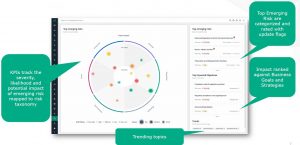“Engaging Patients for Patient Safety”
The theme for World Patient Safety Day 2023 is a recognition of the crucial roles patients and families play in improving the quality and safety of care. It is a call to action to promote awareness of the active engagement of patients and families to improve patient safety.
Patient engagement is one of the main strategies towards reducing avoidable harm in healthcare. When patients are engaged and empowered, they are more likely to better manage their own health, be aware of risks, raise safety concerns, and provide feedback for improvements. Patients’ voices and vigilance can contribute to the safety of their care and that of the healthcare system.
In this blog, we start with the concept behind patient engagement and the challenges in engaging patients and their families. The key takeaways are several practical strategies to engage and empower patients towards safer healthcare.
What is Patient Engagement?
Patient engagement refers to the active involvement of patients and families in their healthcare journey. It encompasses a wide range of activities and communication that empower patients to play an active role in their care process. On one level, it means providing day-to-day care experiences that engage patients and families as active members of the care team. For example, patients and family members will ask questions on their treatment plans, give feedback, and involve in the safe handoff of care between nurses in the change of shift.
On the other level, patient engagement is beyond their own care. This includes working together with healthcare providers, clinicians, and staff to co-develop and improve policies, programmes, processes, and facility design to make healthcare safer. Patients become advocates and champions in patient safety.
Patient engagement is one of the most effective ways to improve patient safety. Patients provide insightful perspective on how care can be made safer. They speak from their own experiences. Patient engagement is also an important part of providing patient-centred care. The core concepts of dignity and respect, information sharing, involvement, and collaboration are essential elements in patient engagement.
The goal is to create a set of conditions where healthcare leaders, clinicians, staff, patients, and families are all working together to improve the quality and safety of care.
Challenges and Barriers
However, there are several challenges associated with patient engagement. It is not a simple process. Health literacy, language barrier, and differences in beliefs, values and preferences are among the common challenges. Patients’ lack of awareness and understanding of what patient safety is, and their role in it, makes it difficult to engage them in self-care and safety practices. Patients with higher health literacy are better equipped to engage in their healthcare decisions and follow treatment plans.
Healthcare providers, on the other hand, often face time and resource constraints when engaging and interacting with the patients. Generally, healthcare systems and processes are not designed for active patient involvement. There are also legal and regulatory issues to be considered to ensure patients’ rights and data privacy are protected, not to mention increased patient involvement could impact provider liability.
Strategies to Engage Patients
Notwithstanding these challenges, healthcare providers should recognise the imperative of engaging patients in their care and include patient engagement in the organisation’s policies, processes, and planning. The shift towards active patient participation is a process that will take time and requires leadership commitments.
As we observe the WPSD 2023, healthcare providers may adopt some of these strategies to improve patient engagement and elevate the voices of patients.
- Improving communication
Communication is the foundation of interactions with patients and families. Various studies show that better communication can improve patient safety, patient outcome, and patient experience of care. Breakdowns in communication among caregivers and between caregivers and patients is one of the major root causes of adverse events.
Actions to improve communication include:
- Provide training to healthcare workers to enhance their communication and engagement skills with patients.
- Actively listen to patients and their families to understand their needs and preferences.
- Encourage patients to share information, ask questions and express their concerns.
- Use plain language to explain diagnoses, treatments, procedures, and bedside shift reports to ensure there is effective communication.
- Establishing policies on openness and transparency
Healthcare providers should commit to policies on transparency to patients, including fully informed consent. This transparency enables patients to stay informed about their health status and make informed decisions.
Actions that can be taken are:
- Ensure that patients are informed about their rights and responsibilities.
- Give patients access to medical records and the information they need to manage their own care.
- Establish feedback mechanisms for patients to report safety concerns or adverse events.
- Develop and implement disclosure policies and procedures to inform patients of patient safety incidents that caused or could have caused inadvertent harm.
- Ensure that patients and their families are given psychological and other support in the aftermath of a serious patient safety incident.
- Educating and empowering patients on self-care
Patient engagement and empowerment is closely linked to health literacy, which is the ability to understand, follow treatment plans and use health information effectively. Patient education is a key step in patient engagement. Actions that can be take are:
- Offer educational resources to help patients understand their conditions, treatment options, and how to manage their health effectively.
- Encourage patients and their families to participate as partners in their own care and promote shared decision-making.
- Provide informative tools and educational materials to patients to enhance their awareness and knowledge of safe and effective self-care.
- Develop patient information materials on clinical procedures, including safety risks, and detection of and response to safety hazards.
- Learning from patient experience and feedback
Patients and their families are present throughout the continuum of care and can provide valuable perspective on their care experience. Those who have encountered harm can share their experiences and learnings on system failures. Healthcare organisations should empower patients and their families to play a more active role in identifying risk and potential harm.
- Encourage patients and their families to report adverse events and unsafe practices.
- Create channels for sharing healthcare experiences of patients, including patient safety problems and point to solutions for patient safety improvement.
- Use lessons learned to improve understanding of the nature of harm and foster the development of more effective solutions.
- Develop a strategy for involving patient safety advocates and champions as educators.
- Utilising technologies and digital tools
Healthcare providers can leverage on technology to connect with patients. These tools enable better communication and empower individuals to take a more active role in managing their own health.
- Use digital tools, such as patient portals and mobile apps, to facilitate communication, care coordination, and access to health information.
- Use digital surveys and feedback mechanisms to gather patient input on their experiences and make improvements accordingly.
- Wearable and remote health monitoring devices can empower patients to manage their conditions more effectively.
Working Together to Make Healthcare Safer
Engaging patients for patient safety is a journey that requires trust and transparency, better communication, information sharing, patient education, learning from patience experiences, and collaboration between healthcare providers, patients, and their families. By implementing these strategies, healthcare providers can foster a culture of patient engagement, leading to safer care, better outcomes, and patient satisfaction. Effective implementation of digital tools and solutions can further help to transform patient engagement experience.






